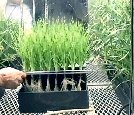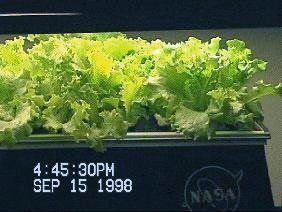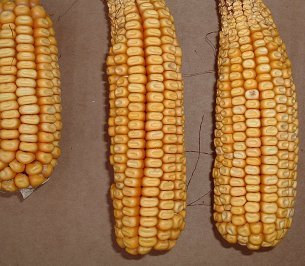Hello, fellow Steemians, I'm happy to be here again. I promised to make this post 2 weeks ago but I haven't been able to do so due to some unfortunate circumstances that I'm thankful are now in the past.
In my penultimate post I spoke about HYDROPONICS, which discusses the methods and benefits of planting in nutrient solutions instead of soil.
Well as much as you will agree that soil and water are both abundant on planet Earth, you will more than agree with me that air is even more readily available than both of them. So how about putting this abundant resource into very good use by using it as the medium for planting.
Yes, we already know that plants under Geoponics get air from the atmosphere and plants under Hydroponics either get their air from the atmosphere or through aerators. However, that is not the usage of air in planting that we aim to discuss here, we're here to talk about planting in the air, yes, no planting in soil, no dipping in nutrient solution, just plant it in the air.
What I am talking about is more technically known as AEROPONICS. What really does it involve, how can one practice it, how has it improved terrestrial agriculture and facilitated. extra-terrestrial agriculture (yes, you read that right), what do you also stand to gain by practicing it. All of these and more lie in wait as you read on. So let's get started
Let's go official first, I love Merriam Webster Dictionary, and here it defines AEROPONICS to be the method of growing plants in which their roots are suspended in the air and and the roots are sprayed with nutrient solutions
OK, so that is the basic principle. There is no growing medium for the plants, they are simply planted, with their roots hanging in the air in an enclosed space,held by foams, baskets or trellisses and the nutrients and water are sprayed on the roots in form of mist. Because the nutrients have to be dissolved before they are sprayed, some have referred to it as a form of Hydroponics, but it is a different method of planting in its own.
Aeroponics thrives on three basic concepts :
- Exposure of the roots to abundant oxygen (since it is not immersed in water on buried in soil)
- Less volume of nutrients and water required
- Increased growth rate of plants
Also, like hydroponics, it has been around for a very long while. As far back as 1911, a researcher by the name Artsikhovski carried out studies on plant roots by having various substances sprayed in the air around them. He is believed to have made the original Aeroponics system and showed that they can be used for plant cultivation.
However, the first research into the process itself was not until 1942 by W. Carter. Also, by 1944, there was another researcher by the name L. J. Klotz who discovered vapour misted citrus plants in an attempt to study diseases affecting avocado and citrus roots. But, according to Stoner (1983), the term "Aeroponics" wasn't coined until 1957 by F. W. Went. And since then, like Went, many others went on to use the word as the process went on to transform agriculture as you will later see (so many went right, don't mind me, it was Went's fault, he coined a beautiful word for a lovely process).
So, now that we have familiarised ourselves with the history of Aeroponics, let us move ahead to see the different ways you can practice the process, your choice may depend on the simplicity, cost or efficiency of the method.
It is worthy of note that whichever one of this methods you choose, they all share certain features. The roots are either in a totally enclosed or semi-enclosed space. Also, the roots of smaller plants will be either be separated from the other parts of the plant by the support structure of the plant (sometimes foam is used) or they are supported by trelisses.
Now to the types, we have :
Low pressure Aeroponics
High pressure Aeroponics
Commercial Aeroponics systems
LOW PRESSURE AEROPONICS : If you are easily encouraged by low cost and simplicity just like me, this is the type of hydroponics you may want to practice. The system is set up such that the plants are grown above a reservoir of nutrient solution. So, at regular intervals, the roots are sprayed with the nutrient solution using low pressure pumps.
After, the plant roots have been sprayed, whatever is left unabsorbed of the nutrient solution drains back to the reservoir. This highlights one of the limitations of low pressure units. Because the nutrient solution is supplied in form of jets by the low pressure pump, the plants receive the solution in big droplets, now even though this may keep the root humid when the plants are still young, it causes at least three issues.
Firstly, it makes it easier for the nutrients to drain back into the reservoir reducing efficiency. However, a far reaching effect is that the large droplets that stay in the roots prevent the root from getting enough oxygen, leading to a reduction in the growth rate of the plant, defeating one of the main purposes of Aeroponics in the first place.
Another problem arises when the plants get bigger and the root mass is bigger, it becomes harder for the water droplets to penetrate the root mass, since the jet of nutrients is under low pressure. In this case, you may want to design your system to spray the plants above the roots.
Other limitations include the fact that, since it is a low cost system, there are mostly no systems in place to ensure that nutrient solution remains free of contaminants, pests pathogens also easily affect plants grown under this method.
- HIGH PRESSURE AEROPONICS : Well, if you don't mind a little complexity, and you want to go a little beyond just planting crops for leisure, and you also happen to lay great emphasis on efficiency, this is a method you may want to consider. I suppose, I wouldn't need to tell you that all these added benefits will increase cost, right. OK, since you still want to know, here you have it.
As the name already hinted, this method employs the use of a high pressure pump, and unlike the large water droplets delivered by the low pressure pumps, these high pressure pumps generate mist and delivers the mist to the roots of the crops. Of course, this means that the roots are not prevented from getting enough air, and when compared to water droplets, mist brings about a larger surface area. These two reasons are the main secrets behind the increased yield under this Aeroponics method.
An alternative to the high pressure pumps is the pressurised reservoirs. These reservoirs are tanks that are divided into two chambers by a sort of rubber diaphragm. One chamber is filled with the nutrient solution, and the other chamber with compressed air (filled up to 60 to 90 psi), the compressed air chamber then transfers pressure through the diaphragm to the nutrients solution until both chambers reach the same pressure, which is enough to form nutrients mist.
More so, unlike the low pressure system, there are systems in place under this method to make sure that the air and water used are purified, and that the nutrients are sterilized. All these are to make sure that pests and pathogens are kept at bay, because a pest and disease attack on such expensively established farm is totally undesirable and can be devastating.
- COMMERCIAL AEROPONICS : This is simply an advanced modification of the High pressure Aeroponics, where there is an accompanying biological control system installed. So you could say it is a way of practicing high pressure Aeroponics in a controlled environment.
These systems are in place to control the effluents, to control pests and diseases, to improve ergonomics, they even regulate the temperature of the nutrients solution.
They are mainly employed when the cost of investment leaves little or no margin for error, especially in the case of high value crops. In fact, according to Stoner (1989), these systems gather and monitor data, there is even a feedback through internet connection to other subsystems.
To answer that question, let me tell you something about NASA (yes, that same NASA that deals with space), as you probably know, they are open to trying possibilities that will enhance life in space. To ensure that there will be food to support possible life in space, they have delved into practicing agriculture in space. However, Geoponics and hydroponics pose a common problem to NASA - an increased weight of payload for the space travel.
So what did they do? You remember Mr Stoner?, huh, don't tell me you didn't notice that I've referenced two of his works on Aeroponics already. Well, I wasn't the first human to notice his works, NASA noticed his work much earlier around 1997 and decided to work with him, since they liked the idea that Aeroponics will at least reduce the payload they have to carry.
This relationship led to an experiment in space, when NASA reached an agreement with Mr Stoner's company to carry out a way of testing disease prevention in space without using pesticides (NASA loves the SPACE, they don't want it contaminated yet). This led to the development of ODC (Organic Disease Control), which Mr Stoner had earlier discovered using Aeroponics to see how ODC will perform in lower gravity ( I still mean space ). It was a success, and it has led to a new dimension of infection control.
What else?
In Newark, New Jersey, you will find a farm owned by AeroFarms which grows leafy greens using an Aeroponic technology invented and patented by Ed Harwood to grow what is regarded as the biggest indoor vertical farm to be found anywhere in the world.
Also, where hydroponics has failed in Agricultual Bio-pharming, where Genetically Modified Corn was grown, Aeroponics was found to be the answer in a research conducted by Dr. Neil Reese at the South Dakota University.
These and many more are the areas where Aeroponics has shown how much of a helping hand it can lend to agriculture.
Many things set Aeroponics apart from other methods of planting, from its being cost effective, to being user friendly, using less nutrients and reducing the risk if pathogens transfer through independent root systems.
However, in my opinion, it's greatest contribution to agriculture has been the fact that it creates an easily controlled environment where new innovations in agriculture can be properly developed and tested. The ODC is just one of many other instances.
After all that has been said about Hydroponics, Aeroponics and those you already know about Geoponics, the choice of which method of planting you choose totally rests on you, and of course, your circumstances should also be taken into account. But, should you end up choosing Aeroponics, you can be sure of immediate rewards, and you might as well be taking a step into the future of mainstream agriculture.
REFERENCES
Carter, W.A. (1942). A method of growing plants in water vapor to facilitate examination of roots. Phytopathology 732: 623-625.
NASA Spinoff (2006) Progressive Plant Growing Has Business Blooming. Environmental and Agricultural Resources NASA Spinoff 2006, pp68-72.
Stoner, R.J (1983). Rooting in Air. Greenhouse Grower Vol I No. 11
Stoner, R.J. (1983). Aeroponics Versus Bed and Hydroponic Propagation. Florists' Review Vol 1 173 (4477).
Stoner, R.J. (1989). Aeroponic Taxus Growth Experiment., Internal Report, Hauser Chemical
Stoner, R.J. and J.M. Clawson (1997-1998). A High Performance, Gravity Insensitive, Enclosed Aeroponic System for Food Production in Space. Principal Investigator, NASA SBIR NAS10-98030.
AEROPONICS| AEROPONICS - HOME HYDRO SYSTEMS
If you write STEM (Science, Technology, Engineering, and Mathematics) related posts, consider joining #steemSTEM on steemit chat or discord here. If you are from Nigeria, you may want to include the #stemng tag in your post. You can visit this blog by @stemng for more details.






I certainly enjoy your way of presenting me this knowledge. It's so simple and easy to understand. But I must ask, why is this not embraced all over the world yet? What are the challenges facing it?
It's first challenge is the fact that not many people are familiar with it,and some of those who have heard of it think it's too complicated, something I tried to address with this post. Another one that I've noticed is a problem that Agricultural Extension officers usually experience when introducing new innovations to farmers, local and small scale farmers usually prefer to stick to known methods (in this case, Geoponics). Which is why you will notice that it is mainly practiced by corporations or large farms.
Tl;dr
So, we need to orientate people about how easy and profitable it is?
Certainly, there is great need for awareness and orientation. It will be a pleasure if you can join in creating the awareness.
You have started a nice campaign by doing series of posts. I certainly will enjoy joining you on your campaign.
I'll be glad.
Hello! I find your post valuable for the wafrica community! Thanks for the great post! @wafrica is now following you! ALWAYs follow @wafrica and use the wafrica tag!
This is yet again an amazing stuff l, its well written.
But how does the root absorb the nutrients from the air?, do the roots also breathe?
They take in the nutrients by absorption. Thanks for the encouragement
Wow.. This is nice!
Wow, Mr Ṣògo. Plants with their roots suspended in air? Wow. My knowledge is just increasing relative to my days spent on this steemit forum.
This is a very nice post, you deserve a round of applause.
Thank you very much, comments like this raise my spirit.
i have actually been anticipating this post and you didn't disappoint with the detail. Nicely done sir!
It speaks a lot that you were anticipating it, I'm happy I didn't disappoint you. Thank you for your continuous encouragement.
I learn new stuff daily from steemSTEM authors... This is just like an extended classroom😁... agriculture in space! all thanks to steemSTEM management.
You deserve some accolades, sir!!!
Trust me, there are a lot of writers in the community that keep inspiring me. I also learn a lot of things from the educating posts in the STEEMSTEM community. Thank you for reading and for your comment.
You're welcome...always
Wow. This is interesting
Thanks
You remain one my favorite author in the community. Your post are usually commanding and detailed. I was here earlier reading about "Hydroponics". Now, this "Aeroponics" is even more educative. Thanks and continue to blossom!
Thanks for stopping by as usual, I'm glad it was worth your time
More than worthwhile..Perfect read
Science is just filled with a lot of possibilities. There are so much going on around the world that we don't know. It is really great to have you inform us. If anyone had told me I could plant by suspending in the air I would have called such person a dope.
A lot is going into colonization of space recently and scientists are looking into every field for aid.
I really always enjoy reading here. Please don't stop, let's have more from you.
Best wishes!
I'm very happy I could pass something new across, and that you find it interesting to read here. I'll do my best to keep improving. Thank you for this well thought and arranged comment.
You are welcome.